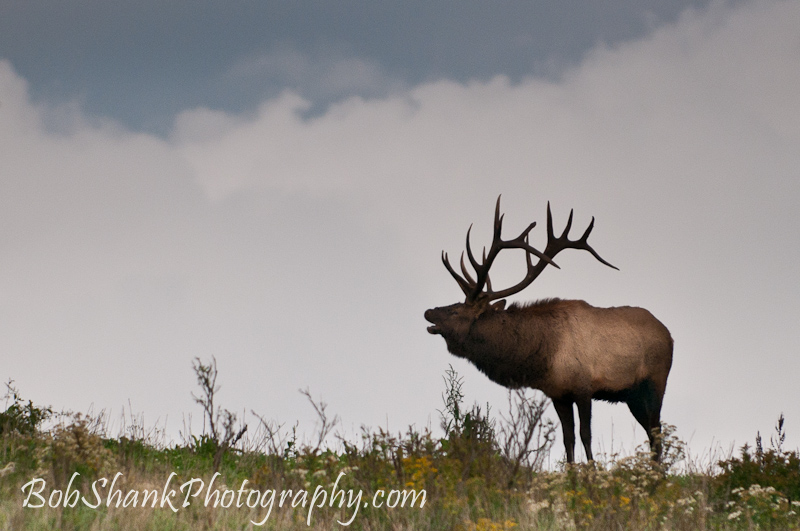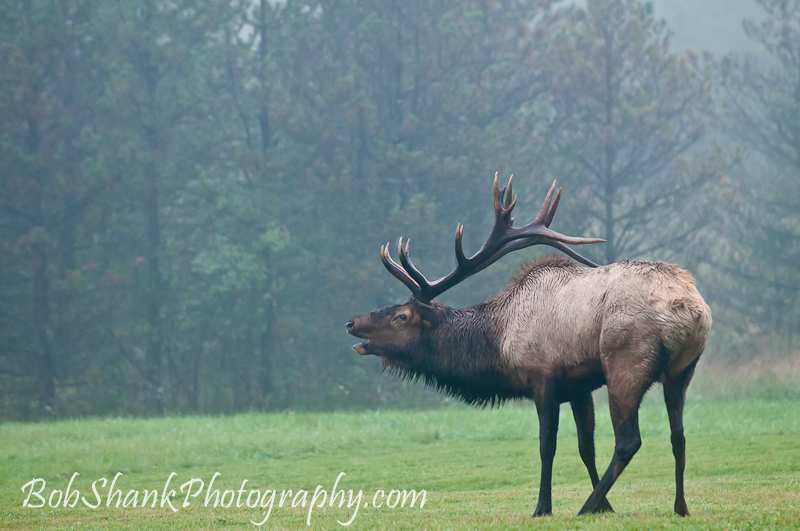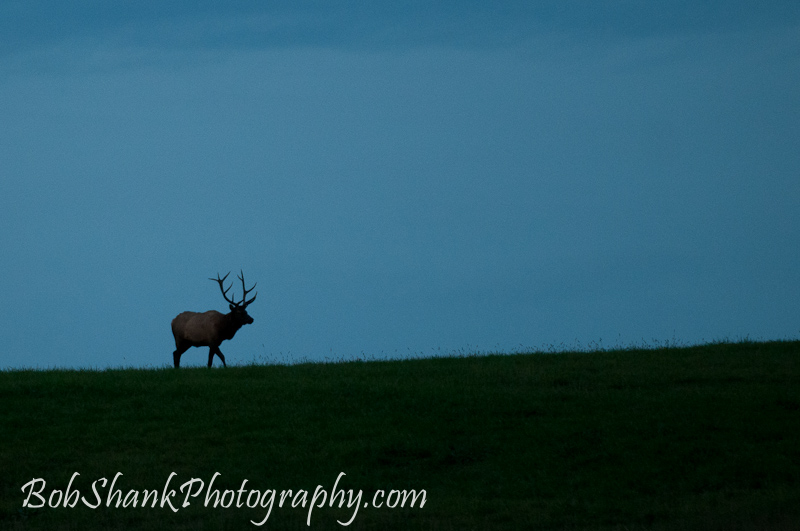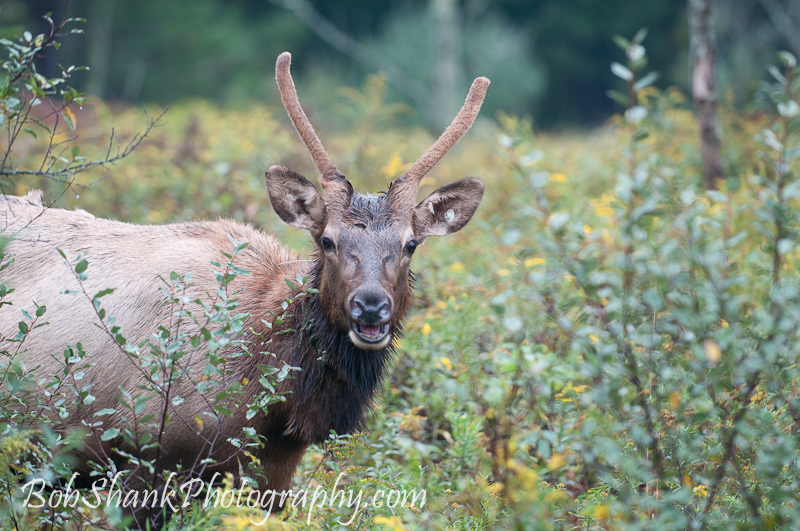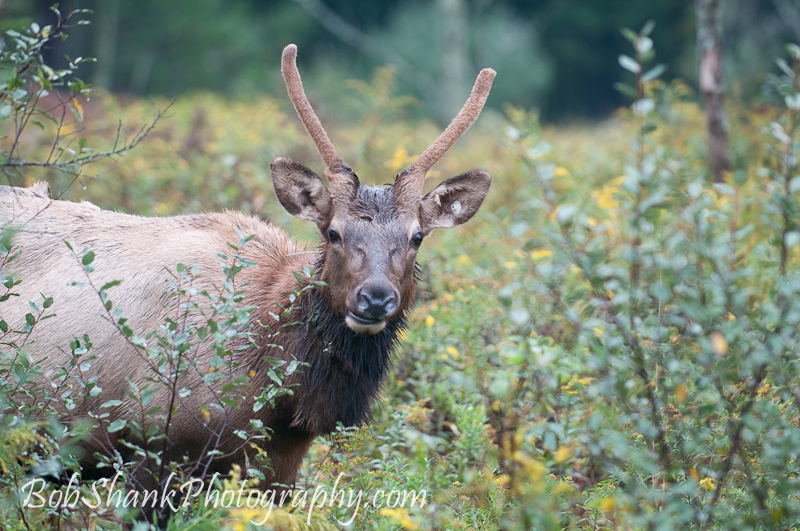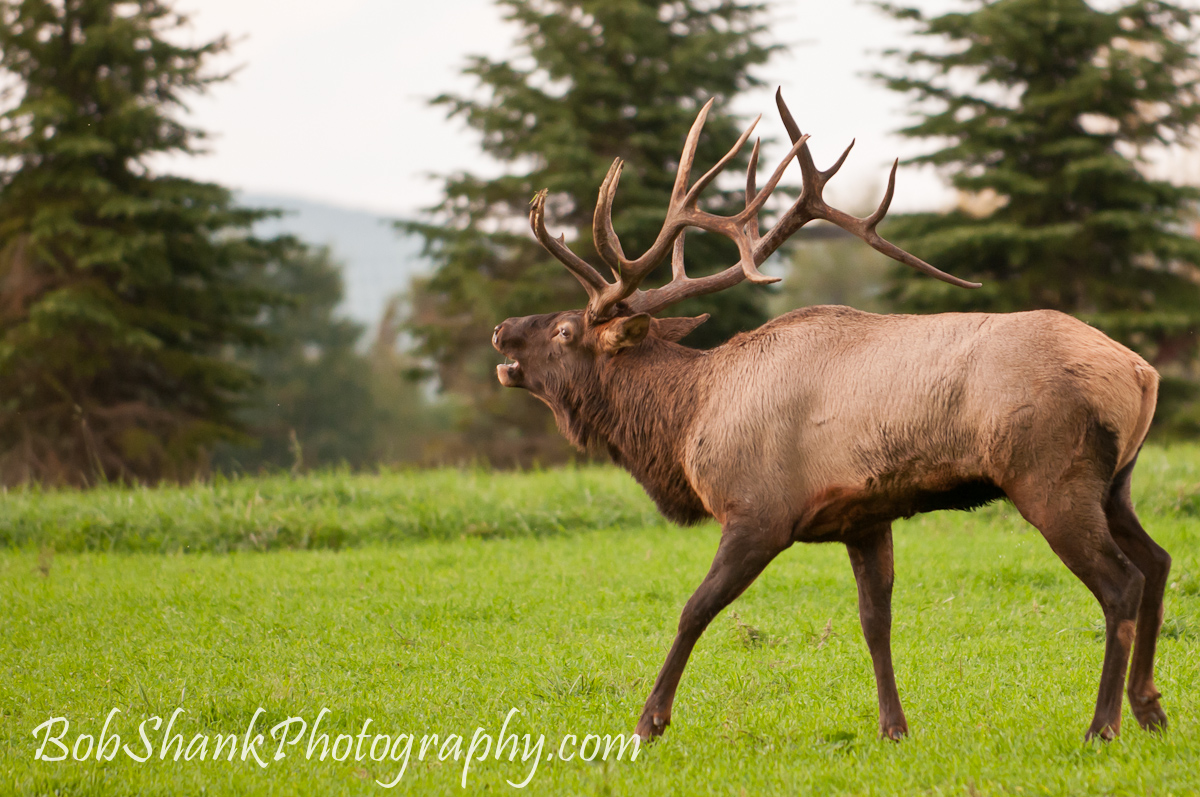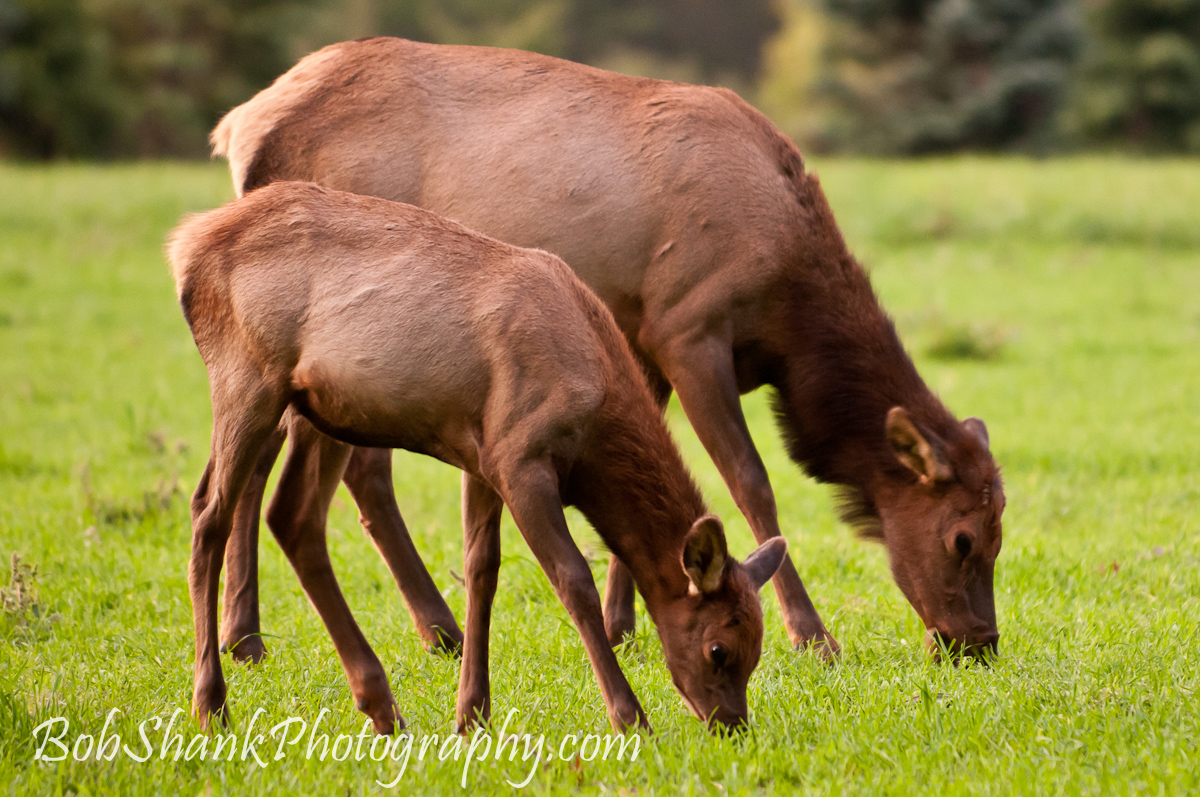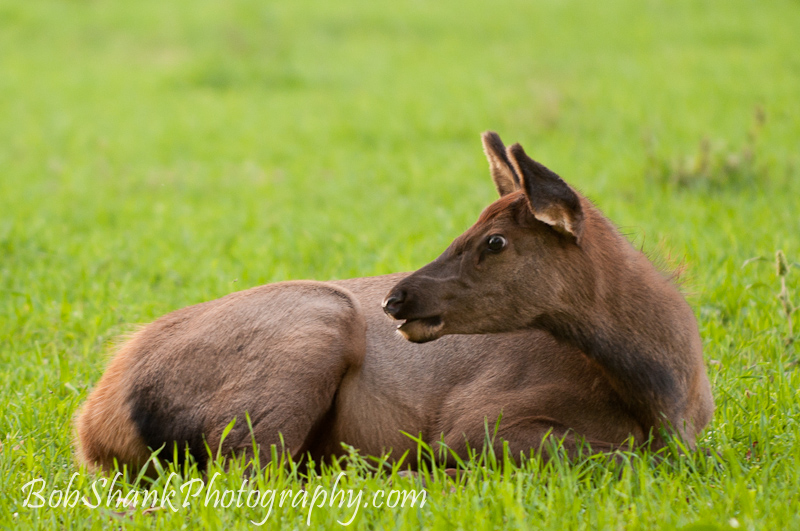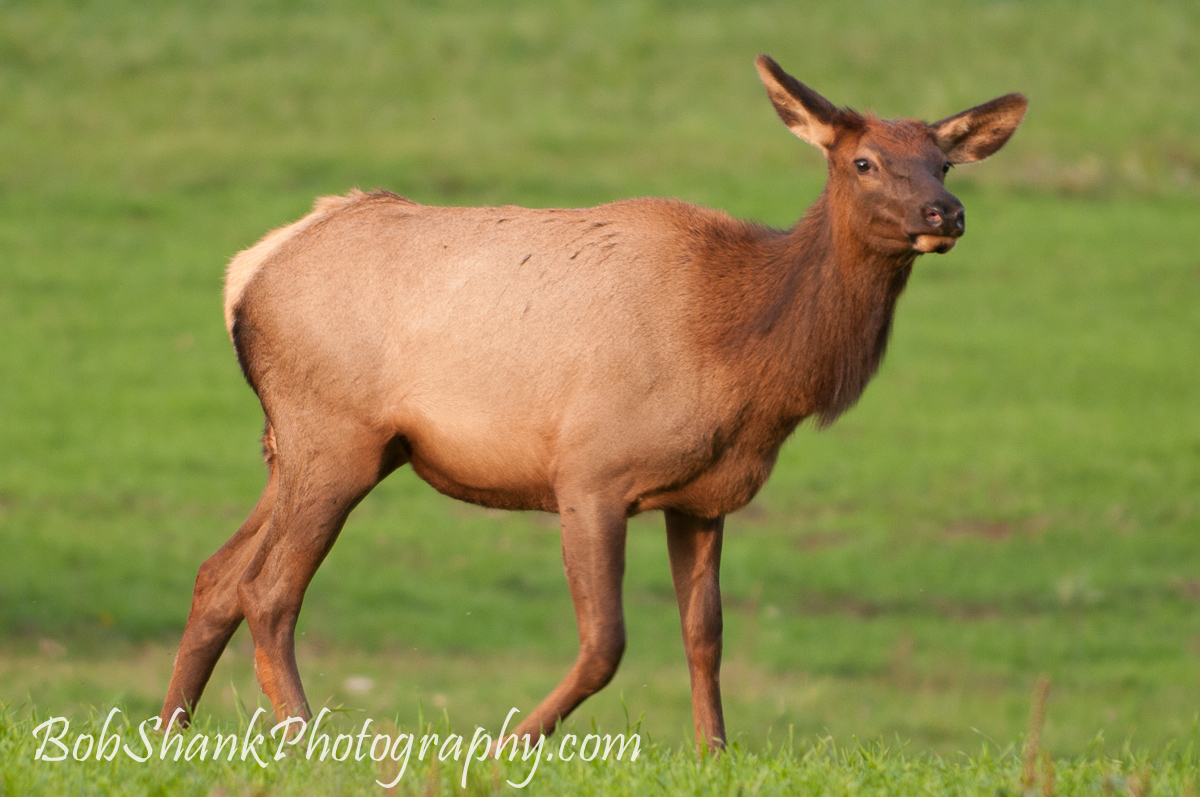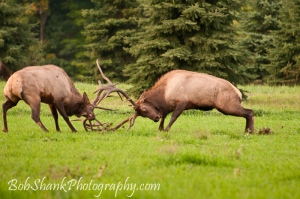
Capturing a classic battle like this with a camera often is frustrating to me. I never seem to be at the right place at the right time. Or the light is fading too quickly, or the fog is too thick for a good photograph. These fight scenes seem to be elusive to me, which can be very frustrating at times.
This photo captures some of the energy in this fight. It all started, as usual, with much posturing from each bull. This is typical and I could just tell that these two bulls were going to go at it. Then, in an instant, they ran toward each other and crashed their antlers together with an ear-piercing jolt! This is what the fall elk rut is all about!
I like the way these two bulls are working hard to dominate the other. I also really like the dirt flying in the air, both between their antlers and behind the right bull’s hind feet. This helps to portray the massive power and energy present in a real honest-to-goodness fight between two mature bulls. Many elk viewers think they are witnessing a fight when in reality they are simply witnessing what is called sparring, which is much tamer and mild compared to a full-blown fight. A lot of us think these fights last longer than they actually do, too. I went back and looked at the metadata from my photographs to determine the starting and ending time of this fight. It only lasted 2 minutes and 20 seconds. This might not seem long to us, but I’m guessing it seems like an eternity for these two bulls!
The one problem with photographing this bull-fight was that we were losing light in a hurry. I had to bump up the ISO to 800 on my D300. I am finding that I do get some decent photographs with this setting and the noise is at a reasonable level, which is good. Then use the noise reduction feature in Lightroom to clean it up. The newer cameras and software have come a long way in recent years in dealing with noise. I found out this week that I can get usable photographs even at an ISO setting of 1600.
This was the only real fight I witnessed this and it was a powerful one. I hope my photographs do a reasonably decent job of portraying the fierce energy present in these fights between two bulls. It sure is something to see!
